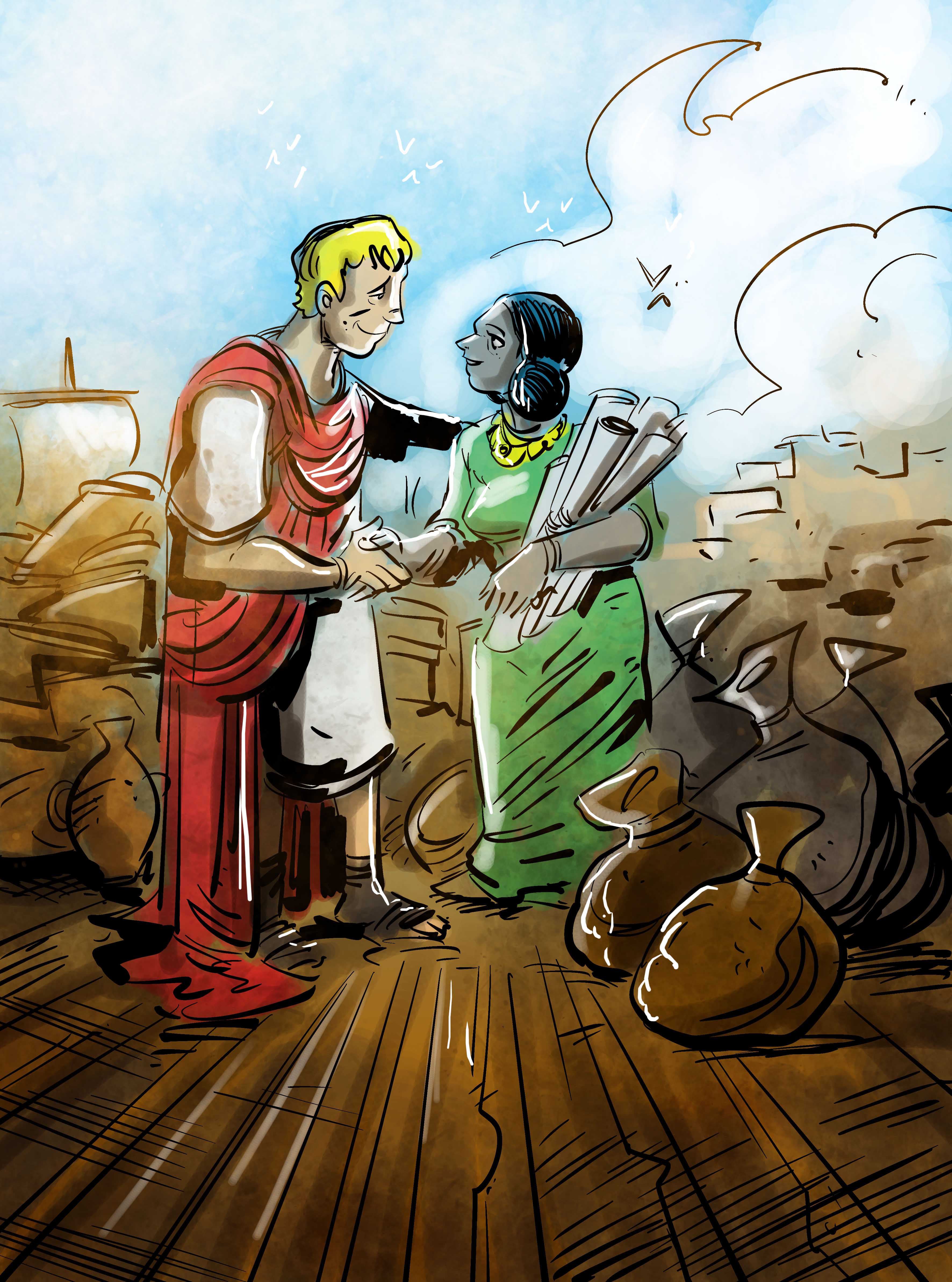
Imperium: Horizons doesn't just add fourteen civilisations - it introduces an all-new trading mechanic that's fully compatible with Classics & Legends. Read on to find out more...
Today on the blog we are spotlighting the new expansion that comes with Imperium: Horizons, Trade Routes. This module introduces new mechanisms and is compatible with all the content in Classics & Legends as well as Horizons. This expansion is entirely optional, however you will need to use it if you want to play any of the 6 trader nations included in Horizons (The Abbasids, Aksumites, Guptas, Sassanids, Tang and the Wagadou; more about these nations in future spotlights).
The Trade Routes are a new suit of cards that are added to the market during setup. One is placed face-up under the mini decks of Civilised, Uncivilised and Regions, and the rest are shuffled into the main deck. Trade Routes may be acquired from the market using your Merchants card or with other cards that specifically mention them. The three Trade Routes under the mini-decks enter the market when they are the last card remaining in that mini deck and a card needs to be placed in the associated spot in the market. Some trader nations even start with a Trade Route or two in their deck.
The Trade Routes expansion also makes heavy use of the new resource Goods. These can be spent as 2 materials or 1 population, the same as you can do with Progress, but unlike Progress it is not worth VP at the end of the game by itself. There are a handful of cards that interact with the new resource even if not using the expansion, but their main use is through the Trade and Commerce abilities. All players will start with a new powerful Merchants power card in play, which gives access to the trading interactions.
So how do Trade Routes work once you’ve managed to gain one? When you play a Trade Route from your hand you immediately resolve its Commerce effect, so for example putting the Andes Highway into play will gain you 2 population and a progress.
You can then make use of it again by trading. When you resolve the Trade keyword (usually by exhausting your Merchants card) you may either:
- Pay a Progress to gain a Goods, OR
- Move one of your Goods to one of your Trade Routes that has fewer than 3 Goods on it, resolving its Commerce effect again, OR
- Place a Goods from the common supply on an opponent’s Trade Route that has fewer than 3 Goods on it – doing that lets you perform their Commerce effect.
Once a Trade Route has 3 Goods on it, no player can Trade with it further until the Goods are removed – thematically, the supply has been exhausted, the demand has been met. As the owner of such a Trade Route, you can use an action to “cash in”: this moves the 3 Goods from the card to your resource pool, and resolves the Profit effect on the card. Usually, the Trade Route is discarded, although some cards such as the Nile Corridor specify otherwise (whether you choose to develop or break through for a Civilised card, the Nile Corridor goes into your History).
Going back to your Merchants card, you’ll see that if you pay 3 Goods (maybe those you got from the profit of your Trade Route) you can exhaust Merchants to flip it over to the Merchant Empire side (of course, that means you cannot use the same card to Trade that turn). Now with a trading empire, you can continue to Trade like you did when you were a lowly merchant, but you can also spend 3 Goods to acquire Civilised or Uncivilised market cards, or once per game even gain a Fame card for your riches!
Solo players, don’t worry: the Trade Routes expansion works with the solo bot too. The bot gets a Merchants power card, just to indicate its merchant state (Merchants or Merchant Empire). At the end of the bot turn after you have resolved the last bot card from the slots you look at the Trade Routes table (at the end of the rulebook) and resolve the first applicable effect of the Merchants or Merchant Empire, depending which state the Bot is in.
Like the player, the bot can Trade using its own Trade Routes or yours, and can resolve the Profits on its Trade Routes. However, when the bot Trades or Profits, you refer to the table on the last page of the rules to determine what the bot does, rather than resolving the printed text (to avoid you having to make decisions for your opponent). For example, if the bot resolves the Commerce effect of Nile Corridor, instead of free playing a card (which is what a human player would do), the bot resolves the top card of the bot deck.
Of course, there is even more to the expansion than this: there are also market cards like the Seaport for you to acquire and use to trade in larger volumes, and even cards found in the “regular” commons of Horizons like Trading City which gains a new value with its Goods income. We’re looking forward to you exploring all the new gameplay the expansion has to offer!
Check out our civilisation spotlights for the Japanese, Taíno, Mayans, Inuit, Magyars,
Polynesians and Cultists. And we'll be back with more next week covering the Abbasids.
High res versions of all teased cards are available on the the game's
BoardGameGeek page under the images section.
Imperium: Horizons is out February 2024. Pre-order now.




Comments
You must be logged in to comment on this post. Click here to log in.
Submit your comment